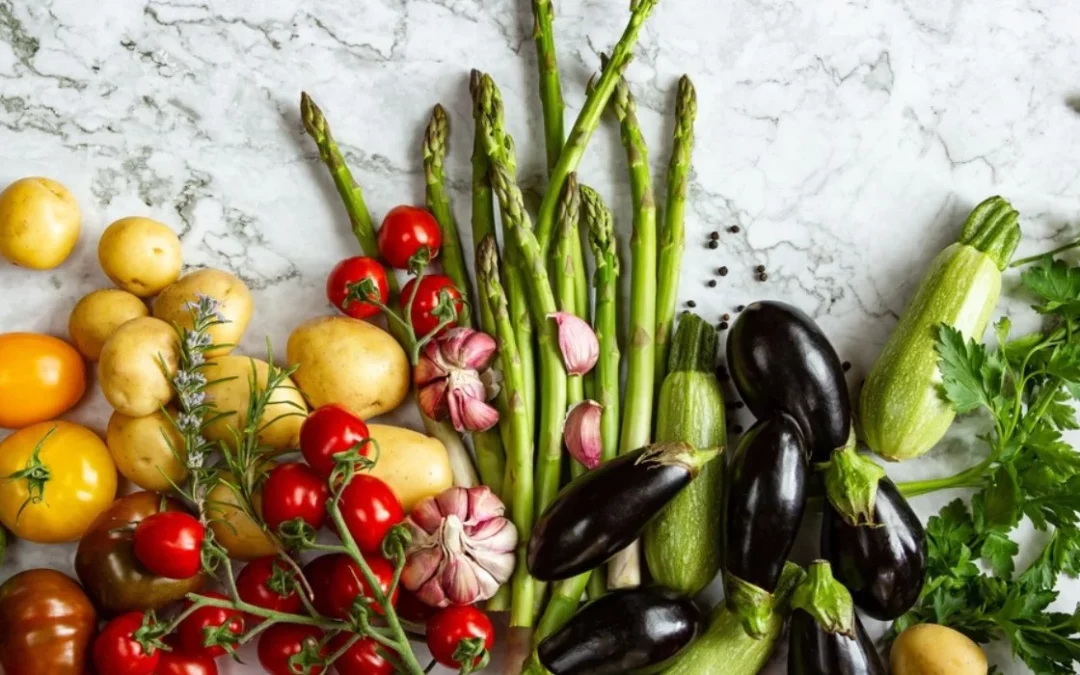The popularity of vegetable gardening shows no signs of plateauing, and that makes your goal of eating in a more seasonal and local way easier than ever. Growers are introducing lots of new, and older but new to you varieties. Designers are reworking standard tools in ergonomic ways. And information is so readily available. Many of us have planted vegetable gardens or have made room in our landscapes for fruiting plants. And at this time of year, we are starting to celebrate our harvests.
The delectable fruits and vegetables of summer are arriving at the farmers markets. Luscious strawberries and crisp asparagus are giving way to juicy red raspberries and delicate heirloom tomatoes. Crunchy, late summer apples and spicy peppers will soon grace our tables. So why wait for someone else to have all the fun producing these precious foods? You can grow all these gourmet varieties at home and they will be even more delicious when you pluck them fresh from the garden.
Many of the vegetable crops are starting to produce like gangbusters. Once we got past the wildly swinging temperatures of May and June, the recent hot weather certainly got the veg garden party started. We’d all agree that more rain is necessary, so do keep your fingers crossed and your soaker hoses and sprinklers in good working order.
As far as insects are concerned, watch for earwigs, flea beetles and slugs. And of course, the dreaded Japanese beetles. They’ll munch holes in everything, seemingly overnight. Observation is the key to catching a problem before it gets out of control. Look closely at your plants as you tend to them and you’ll notice when something is wrong. There are lots of options in the way of treatments. One of my favorites is to use that workhorse of the early spring garden, the floating row cover. Japanese beetles tend to fly in and land on plants that they want to munch. Draping a row cover over your raspberries and beans will keep them away from your plants. When you’re ready to harvest, just pull it back. Stop in to the Garden Center and we’ll discuss all of the options and help you find the one that suits you and your garden.
To help retain soil moisture, apply a layer of mulch to the rows between plants in your vegetable garden. You can use bark, straw or hay, shredded leaves or herbicide-free grass clippings. This will help to keep moisture in the soil and will discourage weed growth. Mulching also protects ripening vegetables from rot. Water the soil around the root area and try not to wet the leaves or fruits. You’ll have less mildew and other fungal diseases when you irrigate this way.
If you planted them, it’s almost time to harvest potatoes, garlic and onions. Watch for the tops to begin to die back and then carefully lift them with a garden fork. Pick peppers and tomatoes when they are fully colored. And be sure to keep your tomato plants evenly moist. This is the best defense against blossom end rot. Don’t forget to re-sow cool weather crops like lettuce, peas, radishes and carrots once the heat begins to moderate, usually in mid-August.
As for fruit, harvest your blueberries, cherries and grapes as they ripen. You may need to put a net or row cover over the plants to protect the fruit from birds and animals. And once your summer-bearing raspberries are finished fruiting, remove those exhausted canes. With the fall-bearing varieties, you’ll have to wait until next month for fruit to ripen, but they’ll produce until frost. Cut those canes all the way back late in the fall or early next spring.
If you find yourself with extra produce, consider dropping it off at the Garden Center’s Giving Gardener kiosk. We’ll take your excess to WayForward Resources, formerly Middleton Outreach Ministry. They’ll share your bounty with local families in need. A win-win!
You didn’t have time to plant your own? No problem! Just patronize one of the many local farmers’ markets. The food is fresh and beautiful, sold at good prices, and you are being green by eating food that hasn’t been trucked for hundreds of miles!

